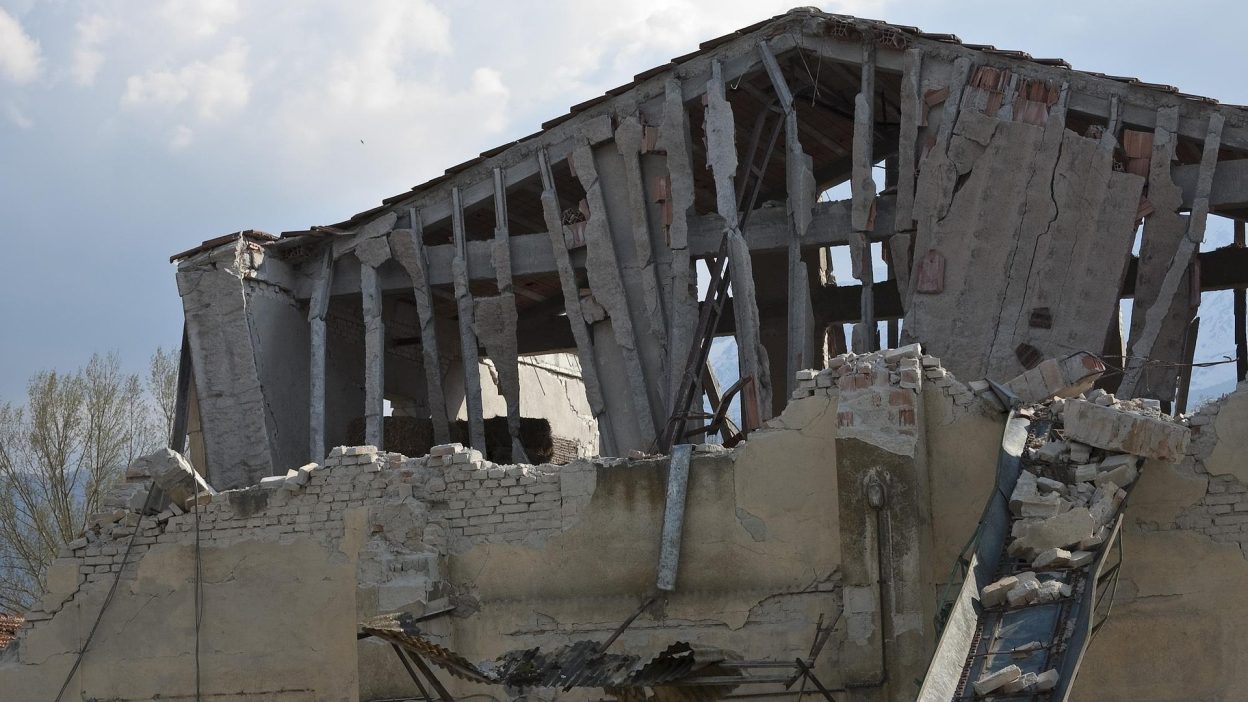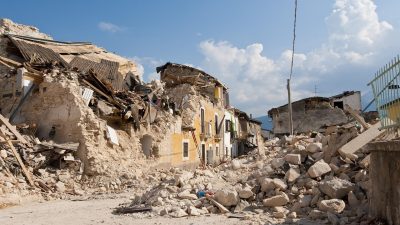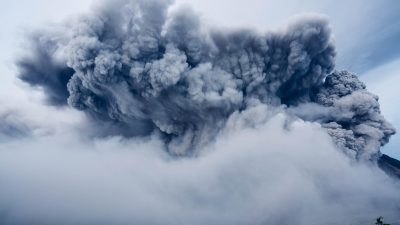A Catastrophe Waiting To Happen – Why Thousands Died And The World Failed To Act
April 2015 Nepal Earthquake: When the Himalayas Trembled in Tragedy
On 25th April 2015, Nepal experienced an earthquake of catastrophic proportions, marking one of the most devastating natural disasters in its history. Registering a magnitude of 7.8, this seismic event tore through the Gorkha District, triggering landslides, reducing ancient landmarks to rubble, and leaving a trail of destruction that was felt across multiple countries.
The earthquake was so powerful that tremors were recorded in India, China, and Bangladesh, causing significant damage in some areas. The disaster’s sheer scale raised questions: Was this devastation inevitable, or could Nepal have been better prepared? Did human negligence make matters worse?
As the ground cracked and buildings collapsed, Nepal found itself in the grip of a nightmare, struggling to cope with the enormity of the disaster. But the tragedy didn’t end with the first tremor—aftershocks, landslides, and infrastructure collapse extended the suffering, pushing an already fragile nation to its limits.
A Nation on the Fault Line: The Science Behind Nepal’s Deadliest Earthquake
Nepal is one of the most seismically active regions on the planet due to its location along the Indo-Eurasian tectonic boundary. The Indian plate constantly pushes against the Eurasian plate, creating immense geological stress. For years, scientists had predicted that a major earthquake was inevitable, but no one could have foreseen the extent of destruction that unfolded.
When the tectonic plates finally released their energy, the result was catastrophic ground shaking that lasted for nearly a minute. Entire mountain villages disappeared, roads cracked open, and even Mount Everest’s base camp was hit by a deadly avalanche. The shaking was so intense that many believed the disaster would never end.
Despite being a region prone to seismic activity, Nepal had not implemented adequate disaster preparedness measures. This failure to enforce strict building codes, construct earthquake-resistant structures, and create effective emergency response plans amplified the devastation.
A Nation in Mourning: The Deadly Toll of the 2015 Nepal Earthquake
- Over 9,000 deaths – The earthquake claimed more than 9,000 lives, making it the deadliest seismic event in Nepal’s modern history. Casualties were also reported in India, China, and Bangladesh.
- More than 22,000 injuries – Thousands of survivors suffered life-altering injuries, including fractures, spinal cord damage, and head trauma. Many faced permanent disabilities due to delayed medical care.
- 3.5 million left homeless – Entire communities were flattened, leaving millions to survive in temporary shelters, makeshift tents, or completely exposed to the elements.
- Historical landmarks lost forever – Some of Nepal’s most iconic UNESCO World Heritage sites, including Kathmandu Durbar Square, Bhaktapur Durbar Square, and the Dharahara Tower, were either completely destroyed or left in ruins.
- $10 billion in economic losses – The financial impact of the earthquake was staggering, wiping out almost 50% of Nepal’s GDP, crippling the country’s already struggling economy.
Endless Terror: How the Aftershocks Worsened the Disaster
As Nepal struggled to rescue the trapped and care for the wounded, a new wave of horror unfolded. Aftershocks, some nearly as powerful as the initial quake, kept striking, creating fresh destruction and panic.
The strongest aftershock, recorded at 7.3 magnitude, struck on 12th May 2015, worsening an already dire situation. Entire buildings that had somehow survived the initial quake collapsed, trapping more people under debris.
Survivors who had barely escaped death in the first tremor found themselves running for their lives once again. The psychological toll was immense, with thousands experiencing post-traumatic stress disorder (PTSD) as the ground continued to shake for weeks.
Government Negligence: Could Nepal Have Been Better Prepared?
Despite being in one of the world’s most earthquake-prone zones, Nepal’s disaster preparedness was alarmingly poor. Years of corruption, political instability, and weak infrastructure policies left the nation highly vulnerable when the earthquake struck.
Nepal’s urban centres, including Kathmandu, Bhaktapur, and Lalitpur, were packed with poorly built homes that collapsed like sandcastles. Many of these buildings were constructed without adhering to modern earthquake-resistant designs, leading to unnecessary loss of life.
Had the government implemented strict construction laws, invested in disaster preparedness, and educated its citizens on earthquake safety, the casualties and destruction could have been significantly reduced. But instead, inaction and neglect turned this into a human-made catastrophe.
International Aid Arrives – But Was It Too Late?
As the world watched Nepal’s suffering unfold, nations from across the globe rushed to offer humanitarian aid. Countries like India, China, the United States, the UK, and Japan sent rescue teams, medical supplies, and financial assistance.
However, Nepal’s logistical failures and bureaucratic red tape slowed down the aid distribution process. Crucial food, water, and medical supplies sat at airports, unable to reach the millions who desperately needed them.
Reports of corruption and mismanagement of relief funds further damaged public trust, leaving many survivors to fend for themselves. Instead of immediate relief, Nepal’s most vulnerable communities suffered unnecessary delays, prolonging their suffering.
Who Is to Blame? Nature or Human Negligence?
- Ignored warnings – Scientists had long predicted a major earthquake, but little action was taken to prepare for it.
- Overcrowded, unsafe cities – Rapid urbanisation without proper building regulations left millions living in disaster-prone homes.
- Poor construction standards – Nepal’s lack of earthquake-resistant infrastructure made collapses inevitable.
- Slow response and corruption – Government inefficiency delayed rescue efforts and wasted crucial resources.
- Climate change a factor? – Some experts suggest glacial melting and Himalayan shifts may have played a role in triggering seismic activity.
The Wake-Up Call: What the World Must Learn from Nepal (Conclusion)
The 2015 Nepal earthquake was not just a natural disaster—it was a harsh lesson in the consequences of unpreparedness. While earthquakes cannot be prevented, their impact can certainly be reduced through proper urban planning, strict building regulations, and proactive disaster response systems.
Nepal had been warned for years about its seismic vulnerability, yet poor governance and negligence left millions at risk. The tragedy showed the world that ignoring scientific warnings and failing to prepare can turn a manageable disaster into a humanitarian catastrophe.
This earthquake must serve as a wake-up call for all countries in earthquake-prone regions. Governments need to prioritise disaster resilience, enforce safer building codes, and invest in emergency response training. Without serious changes, the same mistakes will be repeated, and thousands more will die unnecessarily.
Could It Happen Again? Is Nepal Ready for the Next Big Quake? (Final Conclusion)
Seismologists have issued a stark warning—the 2015 earthquake did not fully release the tectonic stress in the region. This means Nepal is still at extreme risk of another massive earthquake in the coming decades.
Despite this, progress on reconstruction and earthquake preparedness has been painfully slow. Many damaged buildings have been rebuilt without proper safety measures, and thousands of families still live in unstable conditions.
If another earthquake of similar or greater magnitude were to strike, would Nepal be ready? The answer, sadly, is no. Unless major reforms are made in urban planning, disaster management, and emergency response, the country remains dangerously vulnerable. The clock is ticking, and Nepal cannot afford another deadly mistake.
5 Short FAQs About the 2015 Nepal Earthquake
1. What caused the 2015 Nepal earthquake?
The earthquake was triggered by the movement of the Indian tectonic plate, which is constantly colliding with the Eurasian plate, creating immense pressure that was eventually released.
2. How many people died in the disaster?
The earthquake claimed the lives of over 9,000 people, with more than 22,000 injured and millions displaced.
3. Which areas suffered the worst damage?
The most affected regions included Kathmandu Valley, Sindhupalchok, Dolakha, and Gorkha District, where entire villages were flattened.
4. Did Nepal receive enough aid?
Nepal received billions in international aid, but bureaucratic delays, corruption, and poor logistics prevented efficient distribution, leaving many survivors without immediate help.
5. Could Nepal experience another major earthquake?
Yes, Nepal remains one of the most seismically active regions in the world, and scientists warn that another massive earthquake is inevitable.




